
The Maltese Falcon is a film everyone should see once for the fun and more than once for the details. Released Oct. 18, 1941 – seven weeks before the Japanese attack on Pearl Harbor – it is in many ways a quintessential Hollywood movie.
It is so good because everything in it – story, characters, plot, dialogue, acting — is so good, beginning with the novel, written by Dashiell Hammett and published in book form in 1930.
The movie script has been described as a “page by page” duplication of Hammett’s plot and dialogue. It is a hell of a good story filled with the promise of unimaginable wealth tempered with worldly attitude, blatant cynicism, and, in the end, old-school honor.
First-time movie director Walter Huston would win an Academy Award for Best Writing (Screenplay) and the film itself was honored as Best Picture for 1941. A third Oscar went to Sydney Greenstreet as Best Supporting Actor for his portrayal of Casper Gutman, “… a man who likes talking to a man who likes to talk.”
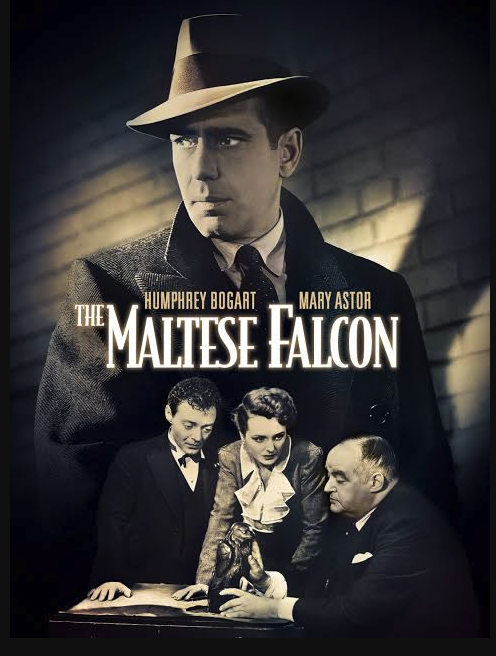
Hammett (1894-1961) published seven novels, only one featuring the character Sam Spade. The private detective is featured also in three short stories by Hammett, published in 1944 in “The Adventures of Sam Spade and Other Stories.” His final full-length novel, which introduces the husband/wife detective team Nick and Nora Charles, was The Thin Man (1934).
Hammett wrote other memorable books and characters (the Continental Op), but critics point to The Maltese Falcon as his finest work. The movie is described as “hardboiled” and “classic film noir.” This approach overlooks the humor in Hammett’s writing, although it can also be a little rough around the edges.
In the movie, the character of Joel Cairo (played by Peter Lorre) is introduced by Spade’s secretary as “a real knockout,” implying to her boss that he is about to meet a beautiful woman. The fact that Cairo wears a sweet cologne only supports the remark. He may be effeminate, but he also manages to soon have Spade at gunpoint with the request: “You will please clasp your hands together at the back of your neck.”
Hammett writes interesting characters, and Huston used good judgement when he lifted most of it right from the page. In brief, the San Francisco-based detective firm of Spade and Archer gets a new client, Miss Wonderly, whose sister has apparently fallen in with bad company, the one each Floyd Thursby.
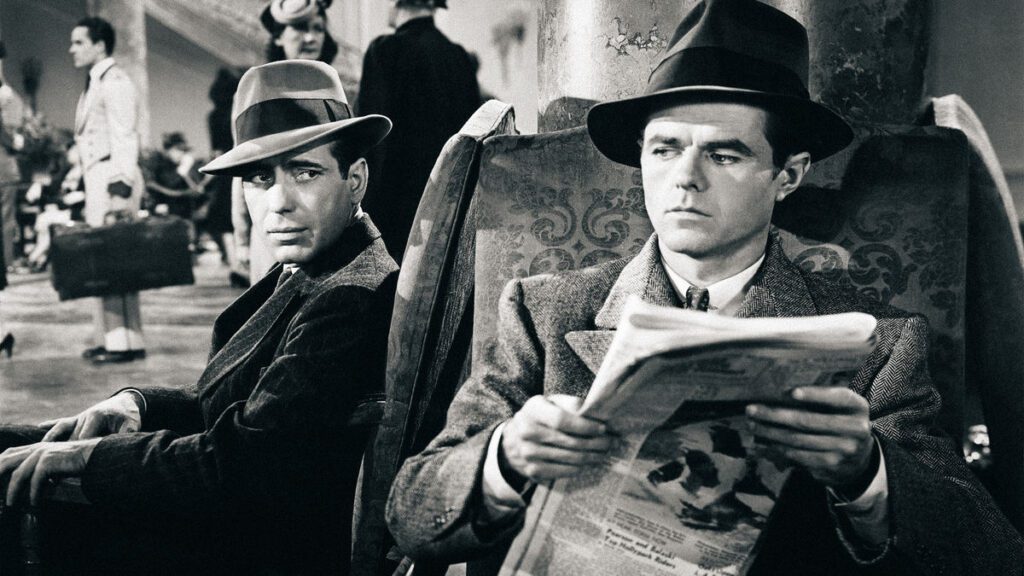
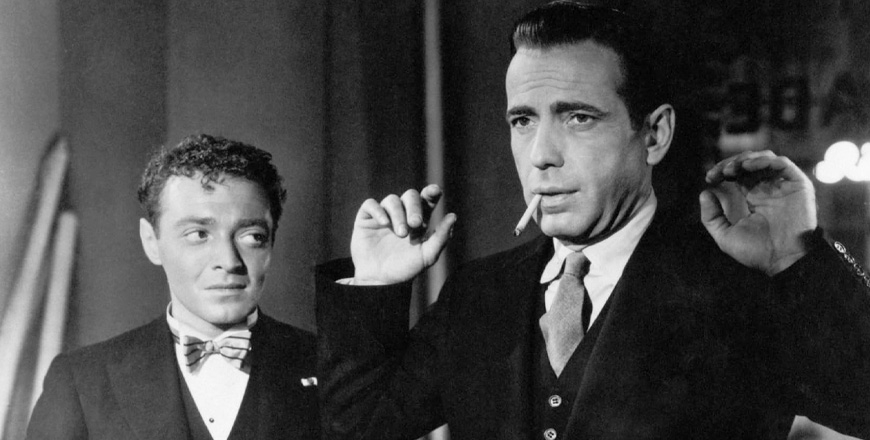
She retains the firm, and Spade remarks later in the film, “We didn’t exactly believe your story, Miss Wonderly. We believed your 200 dollars. I mean, you paid us more than if you had been telling us the truth, and enough more to make it all right.” Her real name is later revealed to be Brigid O’Shaughnessy. Spade’s partner Miles Archer claims the case and Miss Wonderly (Mary Astor), “Maybe you saw her first, Sam, but I spoke first.” The next morning, Spade receives news that his partner has been shot and killed.
Also receiving the news is Archer’s wife, who is involved romantically with Spade. He describes the consequences of his partner’s death, “Yeah, with ten thousand insurance, no children, and a wife that didn’t like him.” After the murder, the police arrive at Spade’s apartment, as do a trio of international criminals with bad intentions: Gutman, Cairo, and a gunsel for hire named Wilmer (Elisha Cook). “The cheaper the crook, the gaudier the patter,” Spade remarks after Wilmer suggests the detective might soon be “picking iron out of (his) liver.”
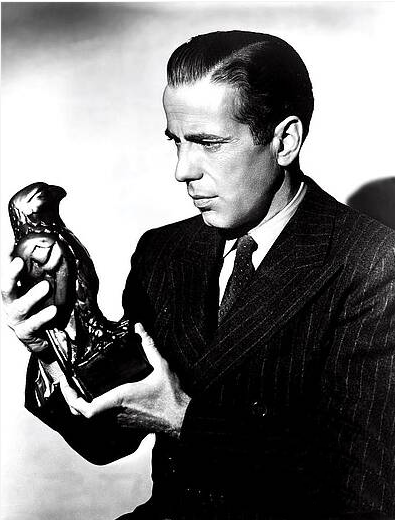
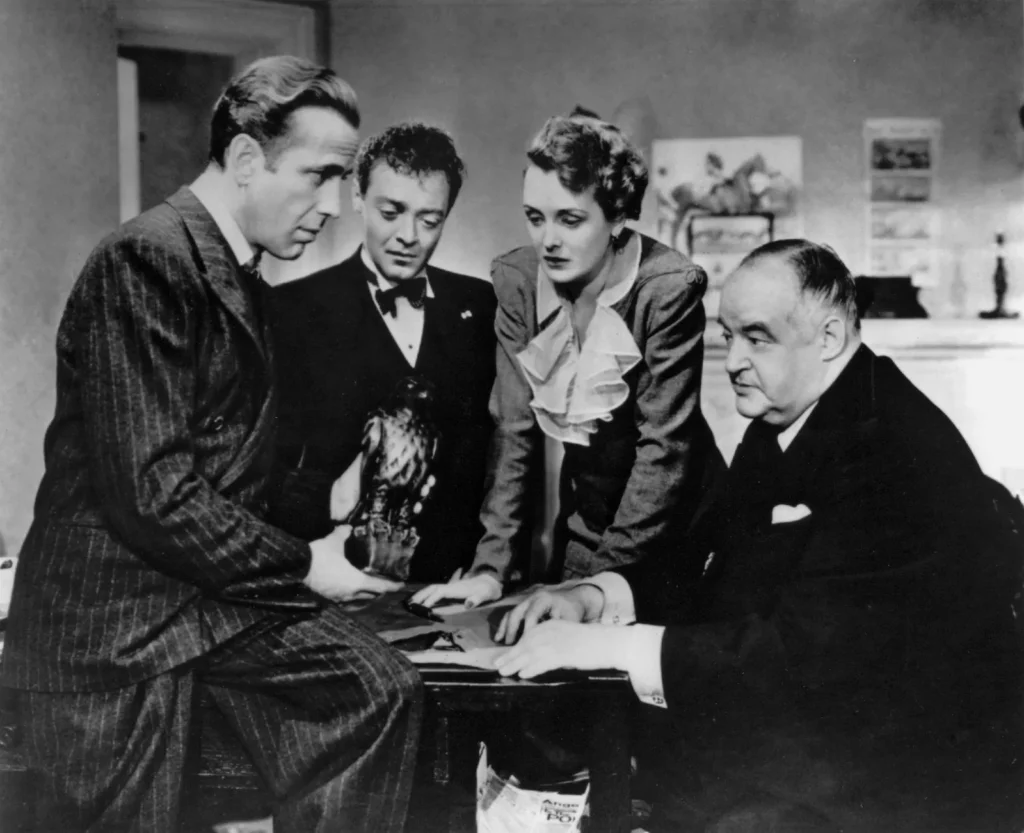
Spade’s aside comments – delivered by Humphrey Bogart with professional confidence – are among the best parts of the picture. His insight is on point and merciless when he sizes up Miss Wonderly/O’Shaughnessy: “You won’t need much of anybody’s help. You’re good. Chiefly your eyes, I think, and that throb you get in your voice when you say things like ‘Be generous, Mr. Spade.’” The movie audience is left to sort through the colorful characters and tough conversations, the deceit, the lies, and the casual approach to betrayal and ultimately murder. How is it all justified? The movie’s opening title card explains it all:
“In 1539, the Knight Templars of Malta, paid tribute to Charles V of Spain, by sending him a Golden Falcon encrusted from beak to claw with rarest jewels.” Wow. Solid gold with priceless jewels “beak to claw.” The movie’s bird – covered in black shellac –turns out to be an illusion, but the desire for historical treasure burns bright at movie’s end. The film’s end also offers Spade a bit of redemption as he returns to his own slightly bent code of honor: “When a man’s partner is killed, he’s supposed to do something about it. It doesn’t make any difference what you thought of him. He was your partner, and you’re supposed to do something about it.”